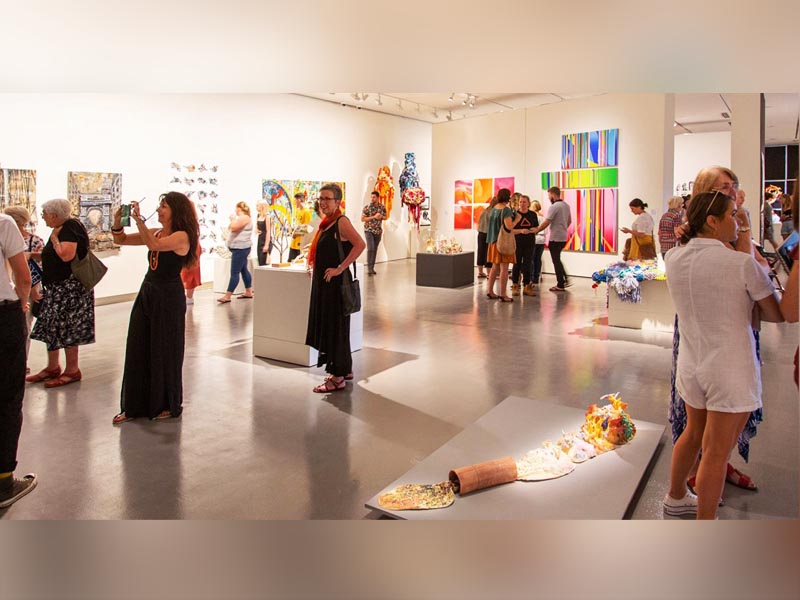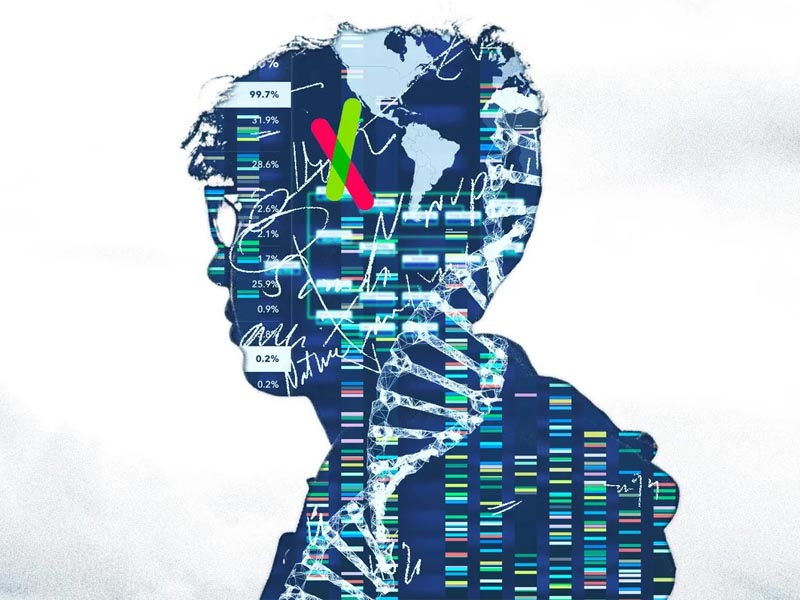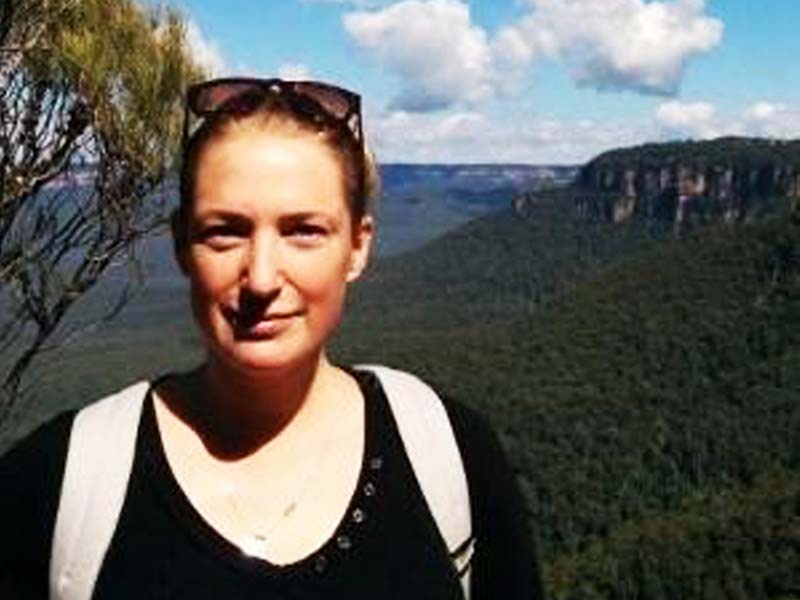If you teach senior visual arts in high school, you are taken on an emotional rollercoaster with your students as they make their way to the HSC. You spend countless hours teaching them the skills and content to pass their written Art Historical and Critical exams. Then you spend even more countless (un-paid) hours thinking about, talking about, workshopping, and losing sleep over their ideas for their major works. Some ideas are stunningly beautiful and ambitious, some are, frankly, uninspired, if not abysmally bad (but you can’t tell them that, of course).
It is a harrowing two years, and along the way you cry, fight, fall-out and make-up several times. This is with your domestic partner (because you take your work home), but it isn’t easy with the students either. At the end of it, you hope they have something half decent to submit to the examiners that won’t embarrass them (or you) too badly. You hope that you’ve all become slightly better people in the process. Your parting words are encouraging and inspiring (you hope). Some students thank you for all the time, effort and help you put in and give you gifts, others don’t. Finally, you send them out into the world, and a weight is momentarily lifted off your shoulders. Then you start bracing yourself for the next lot.
So where do these half-formed young adults go, when you shut the high school door on them with an Oscar Wilde quote about being yourself because everyone else is already taken? Some take a gap year, some enter the work force, others…well, I don’t know what they do. The rest—those students who defy their parents’ negative pronouncements about future unemployment and decide to pursue art in university—land in my classroom.
First Year First Semester University students at (insert name of Sydney based art college here). Henceforth known as FYFS.
These guys are, yet again, in Year 7 in the school of life. They are in a new institution with new rules, new responsibilities and, alas!, new freedoms. They are older, but they are still very young in the scheme of things. They might be living out of home for the first time. They will almost certainly have a part-time job. They have no idea what to wear every morning, and there might be girls/boys (or god forbid, mature-age students) in the classroom for the first time ever. They will be dating/partying and generally running amok, and they need to think about turning up for a 9am lecture, followed directly by a two-hour tutorial. This could mean no breakfast, coffee or cigarettes until noon!
There are two semesters of compulsory art history and theory for all incoming students to my art college. In addition to facing the unique challenges of teaching recent school leavers, there is the added challenge of teaching FYFS who never wanted to—and did not think they would have to—do compulsory art history and theory. More on this in a later article; but now I want to reflect on: “Is teaching FYFS so different to teaching high school students?” After all, the difference between a student going from the one institution to the other might only be a number of months.
I started tutoring into this core art history and theory course in 2010, and I completed a Graduate Diploma of Education in Secondary Visual Arts in 2014-2015. The latter has, without a shadow of a doubt, made me a better university teacher. I have started using scaffolds, explicit teaching, step-by-step instructions, and more diverse activities, and now regularly check understanding and knowledge with surveys and quizzes. Similarly, my teaching prac.supervisors have commented that my university manner/style has added a degree universal respect, acceptance of student opinion, and higher-level dialogue to the high school classroom.
However, I would argue that the biggest difference between university teaching and high school teaching isn’t teaching method, or even content (although content does get more complex, and expectations of student performance change and increase). The biggest difference is in what I would call discipline, or lack there-of. As I discovered during my first teaching prac, most of my beautifully crafted and detailed lesson plans were never even touched because 90 percent of the class time was spent on managing student behaviour. The realisation that high school teaching would often feel like 90 percent discipline and 10 percent content came as a shock and a disappointment: I had wanted to share my vast knowledge of art and its histories with young thirsty minds. As it happened, the students were thirsty, but mainly for other teenage-related things outside of the art classroom. The feedback from my first teaching prac was all about developing “classroom management/behaviour management.”
Conversely, university tutorials generally consist of 90 percent content-ramming, and 10 percent threats about late submission of essays and lack of attendance. At this level you are dealing with (ostensible) adults who are willingly spending their own money (read: parents’s money/HECS) on coming to university, and can therefore be trusted to be responsible for their own behaviour and choices. Therefore, as a university teacher you can make requests and suggestions (and threats) about personal and academic behaviour, but there is no such thing as discipline. Luckily, many FYFS retain good study habits from high school and demonstrate a healthy respect for authority (continuing to call the tutor “Miss/Ms” or “Mr. S”). However, by second semester, at least 70 percent of students have worked out they don’t need to come to classes in order to pass the course, at which point your risk-of-failure threats increase to 20 percent of class time.
Still, in theory, this means that 80-90 percent of your time in tutorial can be spent on imparting that amazing knowledge and love of art to these open and willing minds. All too often though, the content-ramming comes at the cost of any teaching interest or skill from the tutor: I will never forget a tutorial I attended as a student where the tutor (actually a senior lecturer) stood at the front of the class and read us an old research paper of theirs (while we slept). Some new and inexperienced tutors also resort to a mini-lecture, in that they continue the content-ramming for a further two hours in the tutorial, while the students play on their mobile phones. Others still conduct circuitous and counter-productive open forums that somehow always end up being about the Kardashians.
Having to develop and articulate a teaching philosophy in the Dip. Ed. made me realise how I could in fact spend the 90 percent content-ramming time to really teach art and its histories. I knew that I couldn’t make all students care about the content, but I wanted students to retain some of the information, if only because had had fun in that tutorial. So my teaching philosophy, and therefore teaching method, became all about getting students active and engaged: physically moving them around; changing up groups and pairs to increase interaction; doing rather than listening; showing rather than telling; drawing, acting and making things (even in the theory tutorials).
To be fair, this is not a hit with all students: some would like to be sleeping off their hang-overs. However, it is something that I find fulfilling and meaningful, and many students have told me they have found interesting and informative. In the articles to come, I will be reflecting on some teaching methods, activities, and experiments that have worked, and some that really have not.






